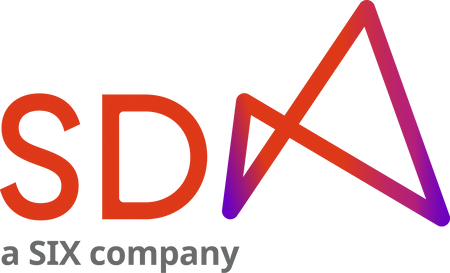Hello Alex! Could you start by telling us a little more about the background of the SDX Web3 Non-Custodial Ethereum Staking Service?
Many of our institutional clients are holding crypto at the moment, or else they have an interest in acquiring and trading crypto. Therefore, it made sense for SDX to look at the infrastructure required to support institutional crypto trading and investing and how we could operate that. Custody and staking were the two main areas that we identified as opportunities to develop market infrastructure for this new asset class.
Essentially, we have launched a new non-custodial staking service for Ethereum, which entails SDX running and operating the crypto infrastructure to support client staking. This fits strategically into our remit and position as a financial market infrastructure provider, which SIX traditionally has been.
How can the SDX Web3 ETH Staking Service help institutional investors gain exposure to this new investment opportunity?
We recognize that institutional investors in Switzerland are holding crypto and already have a custody provider but may want to enjoy the rewards gained through staking. We have started with Ethereum, as it’s the most extensive proof of stake network, and many of our institutional investors are already holding ETH.
Staking on Ethereum requires every validator node operator to hold 32 ETH, with additional nodes required after that threshold is crossed. This results in a high barrier to entry and a significant infrastructure footprint for institutional clients wishing to gain exposure to this new investment opportunity. Our ETH staking service provides fully managed infrastructure and APIs to enable reliable and secure management of non-custodial Ethereum validator nodes. Essentially, we operate the validator nodes on which our institutional clients can safely and securely stake their ETH holdings, with minimal additional infrastructure built on top of their existing ETH custody capability.
What types of clients can participate in the SDX Web3 ETH Staking Service?
We primarily focus on regulated institutional clients (i.e., FINMA-authorized and regulated banks) in Switzerland, but we are also looking to extend our offering internationally. The Swiss regulator, FINMA, is also very interested in what we’re doing in this domain. They’re keen to understand why we’re getting into staking services, what we will do with it, and how we will protect client investments. FINMA’s interest, and the questions they’ve asked us, have also factored into our chosen target client base due to the characteristics of these types of institutional investors.
We also have a big focus on security. SDX follows the SIX’s security policies, which are aligned with those typical of the banking sector in Switzerland and the EU. Security is essential for the banks we deal with – they all want assurances around the security of the infrastructure we are operating. We have a high standard of due diligence on those processes and can make the required assurances. So, we’re also demonstrating how a well-functioning crypto market infrastructure can operate in Switzerland, with regulated participants and high customer protection and security standards.
The ETH staking service represents SDX’s first foray into commercial crypto offerings. So, what is next – what other opportunities and possibilities will arise in this space?
As the SDX Web3 Product Lead, I have many ideas about what we can do next and where we can go! Hypothetically speaking, SDX has apparent opportunities to provide staking capabilities across other key proof of stake networks, such as Cardano, Avalanche, Polkadot, and Solana, to name a few in the top ten. Beyond that, there are potential opportunities in yield products. For example, we might think about how we can structure a yield product so that an investor can access the higher yields that can arise from holding or staking crypto without taking the risk of actually holding it themselves. We could also look at the development of structured products that again allow access to the yield but would require us to maintain a hedge position. From an infrastructure perspective, hypothetically, we might also consider the types of services provided by Chainlink nodes, which allow smart contracts to access external data and reward node operators. In early October, we launched our institutional custody service for crypto assets, which is a milestone in institutional Web3 infrastructure.
The SDX Web3 custody service includes key storage, transfer execution and monitoring with banking-grade compliance standards, automated reporting and blockchain management. Initially the service comprises two key cryptocurrencies, BTC and ETH, and based on client demand, will plan to expand into further protocols and other crypto tokens such as stable coins, asset and DEFI tokens.
There is no shortage of opportunities in this space, and it’s very exciting to be part of a team leading the development of crypto market infrastructure for the future.
Thank you for your time, Alex!

